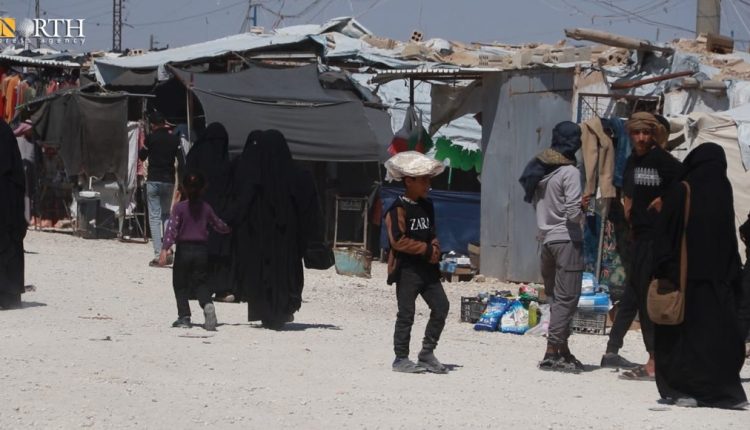By Dilsoz Youssef
HASAKAH, Syria (North Press) – After staying for a long time in Hawl Camp in the countryside of Hasakah, northeastern Syria, Syrian families are finally returning to their hometowns in Deir ez-Zor Governorate, eastern Syria. Despite difficulties, families are eager to leave behind the uncertainties of camp life and rebuild their futures.
After seven years of living in Hawl, Ali Madloul longs to return to his hometown in Deir ez-Zor after packing his belongings in preparation to leave with his family.
Madloul, 48, says it is time to return to their normal lives with their family and relatives, as he has not seen his mother since they became displaced.
Hawl Camp is home to approximately 55,000 individuals, including Syrian IDPs and Iraqi refugees. The camp also includes 2,423 families with connections to Islamic State (ISIS) militants originating from around 60 Arab and foreign countries.
Recently, dozens of Syrian families residing in Hawl left the camp for their homes in Deir ez-Zor, as part of an initiative by the Syrian Center for Studies and Dialogue (SCSD), an NGO operating in Northeast Syria, in partnership with American programs and the Information Management Unit of the camp, and under the guarantee of the prominent tribal figures in Deir ez-Zor.
Plans
This is the first group of Syrian families to leave Hawl this year. Around 42,000 Syrian displaced persons, Iraqi refugees, and families of Islamic State (ISIS) militants still remain in the camp.
Like others, Madloul endured great suffering inside the camp, which many describe as a “ticking time bomb” due to recurring incidents of killing and intimidation by ISIS cells over the past years.
Madloul, a father of seven children, tells North Press that the camp was stable when he first arrived. He adds that as ISIS families started arriving from Baghuz and Susah, the situation deteriorated significantly.
Life became difficult as fear, lack of security, and occasional gunfire at night, and murders increased, he adds.
He points out that recently the situation has somewhat stabilized after the Syrian Democratic Forces (SDF) carried out security operations inside the camp.
When he returns, he plans to return to cultivating his farmlands. He says he used to work as a barber and will return to his profession and teach his children to follow in his footsteps.
High hopes
Meanwhile, as workers hurry to load the luggage onto trucks, 19-year-old Hamza Jassem waits with his family in the waiting area to complete the departure procedures to return to his hometown in the city of Hajin.
He says they have been living in the camp for five years. “Our life was comfortable in the first year but afterwards it changed due to the lack of job opportunities. We could not enter and leave freely. The future was unknown,” Jassem says.
Jassem is happy to return to his hometown even though their house was destroyed in the war, indicating that they will stay with relatives.
Jassem hopes to make up for the days he spent inside the camp. He plans to find a job, a suitable house, continue his studies, and get married.
Reunited
Khamisa Muhammad says that upon her return, she will live with her relatives in areas held by the SDF in the east of the Euphrates River as her house was destroyed in the war. She sought refuge in the camp nearly six years.
She hails from the town of Khsham in the east of Deir ez-Zor, which is under the control of the Syrian government forces and Iranian-backed militias.
Muhammad stresses they are tired of staying in Hawl, especially since the camp’s situation has become difficult. She adds that her children have not received an education and do not know about life outside the camp. ” Living in the camp has become so bad,” she says.
With immense joy, the fifty-year-old woman expresses her happiness about leaving the camp.
“We are very happy now that we are leaving the camp. We are very happy to see our families after such a long time. We are enthusiastic to see our brothers and sisters,” Muhammad points out.

